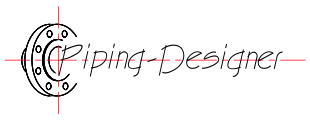Buckling Coefficient
Buckling coefficient for Plates formula
|
||
| \( \sigma_{cr} \;=\; k \cdot \dfrac{ \pi^2 \cdot E }{ 12 \cdot \left( 1 - \mu^2 \right) } \cdot \left( \dfrac{ t }{ b } \right)^2 \) | ||
| Symbol | English | Metric |
| \( \sigma_{cr} \) (Greek symbol sigma) = Critical Buckling Stress | \(lbf \;/\; in^2\) | \(Pa\) |
| \( k \) = Buckling Coefficient | \(dimensionless\) | \(dimensionless\) |
| \( \pi \) = Pi | \(3.141 592 653 ...\) | \(3.141 592 653 ...\) |
| \( E \) = Modulus of Elasticity | \(lbf\;/\;in^2\) | \(Pa\) |
| \( \mu \) (Greek symbol mu) = Poisson's Ratio | \(dimensionless\) | \(dimensionless\) |
| \( t \) = Plate Thickness | \(in\) | \(mm\) |
| \( b \) = Plate Width | \(in\) | \(mm\) |
Buckling coefficient, abbreviated as K, also called slenderness ratio, a dimensionless number, is used in structural engineering to quantify the critical buckling load of a structural element, such as a plate or column, under compressive stress. It accounts for the effects of boundary conditions, geometry, and loading configurations on the stability of the structure. The buckling coefficient is typically derived from theoretical or empirical solutions to the governing differential equations of buckling, such as those based on Euler's buckling theory or plate buckling theory. For instance, in the case of a flat plate subjected to in-plane compression, the buckling coefficient depends on the plate's aspect ratio, the type of edge supports (e.g., simply supported, clamped, or free), and the nature of the applied load (e.g., uniaxial or biaxial compression). The coefficient is used in the formula for the critical buckling stress, By incorporating the buckling coefficient, engineers can predict when a structure will buckle and design it to withstand compressive forces effectively, ensuring safety and stability in applications ranging from aerospace to civil engineering structures.
In summary, the buckling coefficient \(k\) is not defined by a single formula but is determined from analytical, numerical, or empirical solutions specific to the structural element’s configuration. For plates, \(k\) is found in the critical stress formula and varies with aspect ratio, boundary conditions, and loading type, often requiring reference to design tables or charts. For columns, \(k\) is the effective length factor in Euler’s formula, set by end conditions. Engineers use these coefficients to predict buckling behavior and ensure structural stability.

